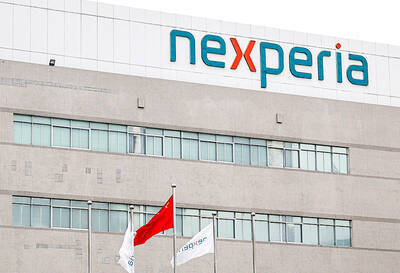As a child, Nguyen Thanh Tung was always fascinated by the beautiful paintings of Renoir.
Now a prosperous real estate dealer, the 30-year-old can finally afford to own some of the work by his favorite artist, even if they are only copies by Vietnam's skilled masterpiece painters.
Years of poverty and isolation from the West led many in communist Vietnamese to view art as a bourgeois extravagance. But now that has all changed.

PHOTO: REUTERS
Art buying is taking off, driven by a fast-growing middle class with a penchant for decorative furnishings.
While Vietnamese art is getting more space on the walls of galleries and private collections in London and Paris and individual paintings can command thousands of US dollars, at home it's reproductions of great masters that are winning admiration.
"For less than a thousand dollars I can turn my whole house into a replica of an impressionist museum," gloated Tung, admiring the sun-bathed landscape of Renoir's Le Mont Sainte Victoire in a Hanoi shop.
Esthetic cravings
Hundreds of shops and studios have sprung up in Vietnam's big cities to cater for the esthetic cravings of the emerging moneyed classes.
Tucked behind a murky cafe in southern Ho Chi Minh City, Ngo Dong's gallery doesn't much resemble Renoir's 19th century Paris studio but his works recall those of the impressionist master.
Waving his brush between a half-finished canvas of Renoir's La Grenouillere and a wooden palette of exotic colors, the 49-year-old painter said his copies have sold well, not just because of his skills, but also because of his deep empathy for the masters.
Demand for look-alike masterpieces is so great that Dong has to turn away "vanity" clients who want their portraits done.
On average, Dong's studio of six workers churns out 400 pieces a year with about half sold locally and the rest exported.
Prices are calculated on a basic rate of US$50 per square meter and US$20 extra for paintings with more than one face due to "more intricate copy work", Dong said.
The same reproduced painting is offered for as much as US$200 on eBay, the popular auction site.
French connection
"Vietnamese painters are much better at copying Western arts compared with painters in other Asian countries," Dong said.
Modern Vietnamese painting started in the 1920s, when the French colonial government established Ecole des Beaux-Arts de l'Indochine (Indochina School of Fine Arts).
It trained a generation of painters from across Indochina. The French influence explains why Vietnamese art appeals to Western eyes and the special skills of the painters.
Dong, a laureate of the People's Army Fine Art Award, also harbors ambitions to be famous for his own creations.
Wiping the dust off a large painting of three young girls facing a deep blue ocean, he said the only reason he was a prolific copier of other artists' works was to support his dreams of painting his own.
If that succeeds, Dong may be granted another wish -- to see, for real, Renoir's paintings in Paris.

JITTERS: Nexperia has a 20 percent market share for chips powering simpler features such as window controls, and changing supply chains could take years European carmakers are looking into ways to scratch components made with parts from China, spooked by deepening geopolitical spats playing out through chipmaker Nexperia BV and Beijing’s export controls on rare earths. To protect operations from trade ructions, several automakers are pushing major suppliers to find permanent alternatives to Chinese semiconductors, people familiar with the matter said. The industry is considering broader changes to its supply chain to adapt to shifting geopolitics, Europe’s main suppliers lobby CLEPA head Matthias Zink said. “We had some indications already — questions like: ‘How can you supply me without this dependency on China?’” Zink, who also

Taiwan Semiconductor Manufacturing Co (TSMC, 台積電) received about NT$147 billion (US$4.71 billion) in subsidies from the US, Japanese, German and Chinese governments over the past two years for its global expansion. Financial data compiled by the world’s largest contract chipmaker showed the company secured NT$4.77 billion in subsidies from the governments in the third quarter, bringing the total for the first three quarters of the year to about NT$71.9 billion. Along with the NT$75.16 billion in financial aid TSMC received last year, the chipmaker obtained NT$147 billion in subsidies in almost two years, the data showed. The subsidies received by its subsidiaries —

The number of Taiwanese working in the US rose to a record high of 137,000 last year, driven largely by Taiwan Semiconductor Manufacturing Co’s (TSMC, 台積電) rapid overseas expansion, according to government data released yesterday. A total of 666,000 Taiwanese nationals were employed abroad last year, an increase of 45,000 from 2023 and the highest level since the COVID-19 pandemic, data from the Directorate-General of Budget, Accounting and Statistics (DGBAS) showed. Overseas employment had steadily increased between 2009 and 2019, peaking at 739,000, before plunging to 319,000 in 2021 amid US-China trade tensions, global supply chain shifts, reshoring by Taiwanese companies and

At least US$50 million for the freedom of an Emirati sheikh: That is the king’s ransom paid two weeks ago to militants linked to al-Qaeda who are pushing to topple the Malian government and impose Islamic law. Alongside a crippling fuel blockade, the Group for the Support of Islam and Muslims (JNIM) has made kidnapping wealthy foreigners for a ransom a pillar of its strategy of “economic jihad.” Its goal: Oust the junta, which has struggled to contain Mali’s decade-long insurgency since taking power following back-to-back coups in 2020 and 2021, by scaring away investors and paralyzing the west African country’s economy.